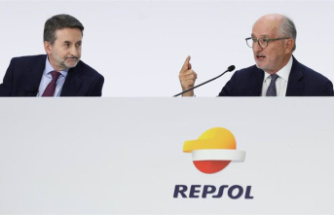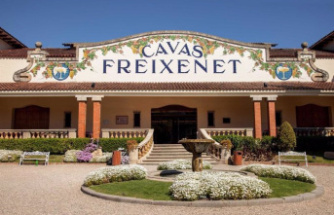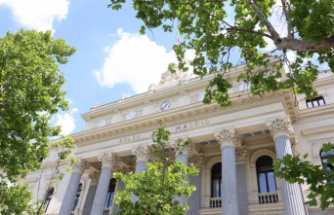Today, the streets of Texas’ cosmopolitan coastal boomtown of Houston will be lined with limos en route to Super Bowl LI.
While 100 million people around the world watch, talented upstart Matt Ryan will try to take down future Hall of Famer Tom Brady. At halftime, Lady Gaga will belt out her best-sellers amid million-dollar pyrotechnics. And free-spending fans will fling hundreds of millions of dollars all over town.
Meanwhile, in the heart of Inglewood, crews will take a day off from hollowing out a mammoth pit east of Prairie Avenue’s aging, low-slung beige buildings.
No spotlights. No celebrities. No luxury hotel packed with NFL execs. No world-class shopping mecca.
Not yet.
But in just four short years, all that will materialize. This blue-collar suburb will be the center of the universe.
If all goes according to plan, the 55th Super Bowl will kick off in February 2021 at the $2.6 billion stadium built by Los Angeles Rams owner Stan Kroenke.
A glittering entertainment district billed as larger than L.A. Live — featuring upscale restaurants, a luxury hotel and a state-of-the-art theater and concert hall — will supplant the cavernous dirt lot where the Hollywood Park racetrack once stood.
A pop-music megastar — Selena Gomez? Adele? Taylor Swift? — will sing the national anthem. Another will entertain at halftime.
The newly renovated Forum could be the among sites considered to host the NFL Experience, where, for $35 or so, visitors can gawk at past Super Bowl rings, the Vince Lombardi Trophy and other posh pro-football tchotchkes.
The road from Houston to suburban Los Angeles County seems endless. The amount of work to be done seems staggering.
But one thing is certain: when the big game kicks off, Inglewood will be a very different place.
“It doesn’t sound real,” said resident Ketana Yarber. “I wouldn’t think they would bring it here.
“It will bring more people to visit Inglewood instead of just Hollywood. It will be a better environment for our children. They’ll see more things that’s going on in the world instead of just the same stuff we see every day.”
The road to renewal
Today, Prairie Avenue is home to a Spanish-speaking evangelical church, discount motels, auto-repair shops, cluttered liquor stores and a retail strip mall anchored by a 7-Eleven.
Evangelical, Baptist and Catholic churches, taquerias, Caribbean and Louisiana-style eateries and international markets jostle for space alongside wig sellers, fast-food drive-thrus and flower shops.
On the north end of Prairie, the sprawling Inglewood Park Cemetery advertises its discounted mausoleums: “Where elegance is affordable.”
The city has its issues. Good jobs are scarce. Violent crime rates are down, but still distressing. A budget deficit has dogged leaders for years. The $42,044 median household income was $14,000 below the county average in 2015, according to a U.S. Census Bureau review.
But signs of the anticipated transformation aren’t hard to find.
A new shopping development, with national retailers such as Costco and Red Lobster, stands just south of the construction site. The new, upscale, Vegas-style Hollywood Park Casino is a far cry from its bedraggled predecessor.
And down the road, LA Metro is busily erecting its new downtown Inglewood station on the Crenshaw/LAX Line near old downtown Market Street’s small discount outlets, beauty salons and jewelry shops.
The city was discovered by then-St. Louis Rams owner Stan Kroenke in the summer of 2013. The self-made billionaire real-estate baron was convinced on the spot to leave St. Louis and build his new empire here, near the 405 and 105 freeways.
When he returned for a festive October groundbreaking that drew the National Football League’s top power brokers, he promised to deliver more than the world’s priciest stadium. He’s betting on the wider revitalization of a hard-scrabble region of Los Angeles County, turning it into a “global entertainment destination.”
The development windfall could reach even beyond the NFL’s premiere event, with Los Angeles Olympics officials vowing a glitzy role for the complex if they are able to snare the 2024 games.
For Kroenke’s plan to work, developers must sign on to fill out about 250 acres of vacant land around the new 70,000-seat stadium with upscale projects designed to attract visitors year-round. Neighboring communities of Hawthorne, Gardena, South Los Angeles and El Segundo also must step up with new hotels, restaurants and entertainment options to house, feed and appease the tourists drawn by the new complex.
“We are confident this is going to be the place to be in 2019 and beyond,” Kroenke said, “not just for football but for entertainment, for events, for eating, for living, for working.”
Inglewood’s stake
“In many ways, this stadium project is an urban renewal project with a stadium thrown in,” said Victor Matheson, professor of economics and accounting at College of the Holy Cross in Massachusetts. “The fact that Kroenke very specifically is designing a stadium plus a neighborhood — that he hopes to make a profit on — is really helpful to Inglewood as a whole.”
Kroenke has acknowledged that he is playing the long game. This is an investment he believes will grow in value with time. Still, he’s working at a feverish pace.
In another indication of an anticipated renaissance, Inglewood home prices increased 22 to 25 percent in 2016, according to the Multiple Listing Service real estate database. The level of growth rivaled such swanky spots as Silver Lake, Bel-Air and newly gentrified downtown L.A.
A four-bedroom, two-bath home in the Morningside Park neighborhood near the future stadium lot now sells for $679,000 — despite the security bars covering its windows.
And over on Market Street, mom-and-pop businesses lining the city’s downtown retail hub have spruced up storefronts once cluttered, dirty or decorated with garish signs.
Matheson said it’s likely Inglewood will experience an impact similar to what Brooklyn enjoyed when the Barclay Center arena was built for the Nets.
“The Brooklyn NBA stadium was a whole neighborhood project, with the stadium as a centerpiece,” Matheson said. “In Brooklyn, we really did have major revitalization in the neighborhood around the stadium. It allowed them to use eminent domain to clean up run-down areas.
“What you have now is a significant urban development with square blocks of mixed-use residential and commercial development. It’s definitely gentrified.”
When the stadium opens in 2019, the added sales tax revenue will deliver $18 million to Inglewood in the first year alone, Mayor James Butts said. The resulting budget surplus, he said, will allow the city to fix streets, modernize downtown facilities, improve parks and deliver additional community services.
When the Super Bowl arrives two few years later, it is sure to spread hundreds of millions of new dollars across the region in just four days, according to economic studies of the game’s financial impacts.
“Being the host city ... will focus international attention and exposure on the city of Inglewood for the entirety of Super Bowl weekend,” Butts said. “The exposure that comes with being designated a future Super Bowl site heightens the interest in developing and relocating to our city.”
Already, he said, the Inglewood Police Department — another civic agency sure to be bolstered by the surge in sales-tax revenues — is working on its security plan for the game.
Super impact
Just how much can a Super Bowl benefit a city?
Economic studies vary widely but, however you slice it, it’s a big boost.
Like Inglewood’s coming event, the 2016 Super Bowl in Santa Clara was held just two years after widely praised Levi’s Stadium was completed. The event — featuring a glitzy halftime show featuring pop giants Coldplay and Beyonce — dumped $240 million across the Bay Area over the long weekend, according to a study by consulting firm Sportsimpact.
The $240 million figure is considered a conservative one. The analysis subtracted money spent by local governments on police services and other costs, said Patrick Rishe, director of the Sports Business Program at Washington University in St. Louis and CEO of Sportsimpacts.
“ ‘Economic impact’ means different things to different people. We estimated that the Super Bowl had a $240 million impact on the entire San Francisco region,” Rishe said. “Santa Clara received a small portion of that but a good chunk was realized in San Francisco itself because people were staying at downtown hotels and eating in the city.
“At the end of the day, the impact goes to the broader region. Inglewood will get a taste — and so will Manhattan Beach, Santa Monica and downtown Los Angeles.”
When the L. William Seidman Research Institute analyzed how much money flooded the metropolitan Phoenix area during the 2015 Super Bowl, it arrived at a figure of $719 million — making it the largest special event ever held in the state of Arizona. That analysis included $450 million in direct spending at the game by out-of-town fans and media, said Seidman senior researcher Anthony Evans. Visitors with Super Bowl tickets spent an average of $728 per day, the study found.
Sold-out hotels, packed nightclubs and extravagant celebrity parties raked in the dollars, and Phoenix’s usually empty public transportation lines filled up with fans, he said.
But the indirect impacts may have brought even bigger returns, Evans said.
“What Phoenix did exceptionally well is they tried to make it a party for the whole state as well, and held a wide range of events,” Evans said. “For most of us, a Super Bowl ticket is not in our price range, but Phoenix made sure free events were available so everyone could be a part of it.
“The people managing downtown Phoenix used the Super Bowl as a reason to showcase the area,” Evans said. “People now actually go downtown and frequent the bars. So, yes, it can change perceptions of an area.”
‘Diamond in the rough’
Dorian Hill is impressed by his hometown’s resurgence. The new father hasn’t yet visited the brand-new Hollywood Park Casino, but is looking forward to taking his wife for a date night at its new restaurant.
“I think this city is kind of like a diamond in the rough,” Hill said. “It’s been laying dormant for so long, it’s good to see stuff finally coming here. That’s going to change the whole economic structure of the whole city.”
While he’s looking forward to the new amenities, Hill isn’t so sure he’s ready for the accompanying cultural shift.
“It’s a good and a bad thing,” he said. “I would hate to see a lot of the mom-and-pops go away. But I also think it would be awesome for the big companies to come in.”
His wife, Chere Hill, is excited about the city hosting tens of thousands of people for the Super Bowl. But she’s more interested in the coming new restaurants.
“We don’t have anything,” she said. “If we want to go somewhere, we usually have to get in the car and travel. It would be nice to have some of the known restaurants. For younger people like ourselves, there’s nothing really around here, so that’s going to be awesome.
“I think we need a little change.”
Our editors found this article on this site using Google and regenerated it for our readers.













